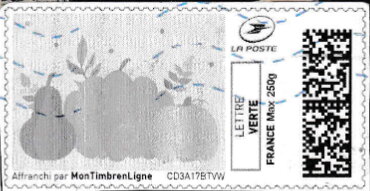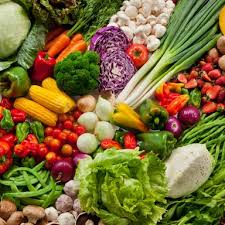Stamp: Autumn. Pumpkins and Pears in black (France 2019)
Autumn. Pumpkins and Pears in black (France 2019)
01 January (France ) within release MonTimbrEnLigne. Seasons goes into circulation Stamp Autumn. Pumpkins and Pears in black face value Lettre No Face Value
| Stamp Autumn. Pumpkins and Pears in black in catalogues | |
|---|---|
| Colnect codes: | Col: FR-TIM 2019-41b |
Stamp is square format.
Also in the issue MonTimbrEnLigne. Seasons:
- Stamp - Summer. Flowers and a Watering Can. Blue colour missing face value Prioritaire;
- Stamp - Summer. Flowers and a Watering Can. Resdesign face value Lettre;
- Stamp - Autumn. Hedgehog and Acorns. Specimen face value Lettre;
- Stamp - Spring. Flowers in Wellies. Black face value Lettre;
- Stamp - Summer. Flowers and a Watering Can in black face value Lettre;
- Stamp - Winter. Snowman in black face value Lettre;
- Stamp - Spring. Flowers in Wellies face value Lettre;
- Stamp - Summer. Fishing Hut on the Atlantic Coast face value Ecopli;
- Stamp - Autumn. Bonfires and Nuts in black face value Lettre;
- Stamp - Autumn. Pumpkins and Pears in black face value Lettre;
- Stamp - Spring. Birds Nesting. Lemon Background face value Lettre;
- Stamp - Summer Landscape in black face value Lettre;
- Stamp - Summer. Girl in a field of Sunflowers face value R1-AR;
- Stamp - Summer. Sand Castle in black face value Lettre;
- Stamp - Winter. Cat on the Windowsill in black face value Letre;
- Stamp - Winter. Sledge in black face value Lettre;
- Stamp - Summer. Beach Scene. Solitary Blue and White Beach Umbrella face value Ecopli;
- Stamp - Spring. Birds Nesting. Pink Background face value R1-AR;
- Stamp - Summer. Beach Scene. Windscreens face value R1-AR;
|
Data entry completed
46%
|
|
|---|---|
| Stamp Autumn. Pumpkins and Pears in black in digits | |
| Country: | France |
| Date: | 2019-01-01 |
| Emission: | Personalized - Official |
| Format: | Stamp |
| Face Value: | Lettre No Face Value |
Stamp Autumn. Pumpkins and Pears in black it reflects the thematic directions:
utumn, also known as fall in North American English,is one of the four temperate seasons on Earth. Outside the tropics, autumn marks the transition from summer to winter, in September (Northern Hemisphere) or March (Southern Hemisphere). Autumn is the season when the duration of daylight becomes noticeably shorter and the temperature cools considerably. Day length decreases and night length increases as the season progresses until the winter solstice in December (Northern Hemisphere) and June (Southern Hemisphere). One of its main features in temperate climates is the striking change in colour for the leaves of deciduous trees as they prepare to shed.
In botany, a berry is a fleshy fruit without a drupe (pit) produced from a single flower containing one ovary. Berries so defined include grapes, currants, and tomatoes, as well as cucumbers, eggplants (aubergines), persimmons and bananas, but exclude certain fruits that meet the culinary definition of berries, such as strawberries and raspberries. The berry is the most common type of fleshy fruit in which the entire outer layer of the ovary wall ripens into a potentially edible "pericarp". Berries may be formed from one or more carpels from the same flower (i.e. from a simple or a compound ovary).: 291 The seeds are usually embedded in the fleshy interior of the ovary, but there are some non-fleshy exceptions, such as Capsicum species, with air rather than pulp around their seeds.
Vegetables are parts of plants that are consumed by humans or other animals as food. The original meaning is still commonly used and is applied to plants collectively to refer to all edible plant matter, including the flowers, fruits, stems, leaves, roots, and seeds. An alternative definition of the term is applied somewhat arbitrarily, often by culinary and cultural tradition. It may exclude foods derived from some plants that are fruits, flowers, nuts, and cereal grains, but include savoury fruits such as tomatoes and courgettes, flowers such as broccoli, and seeds such as pulses.



